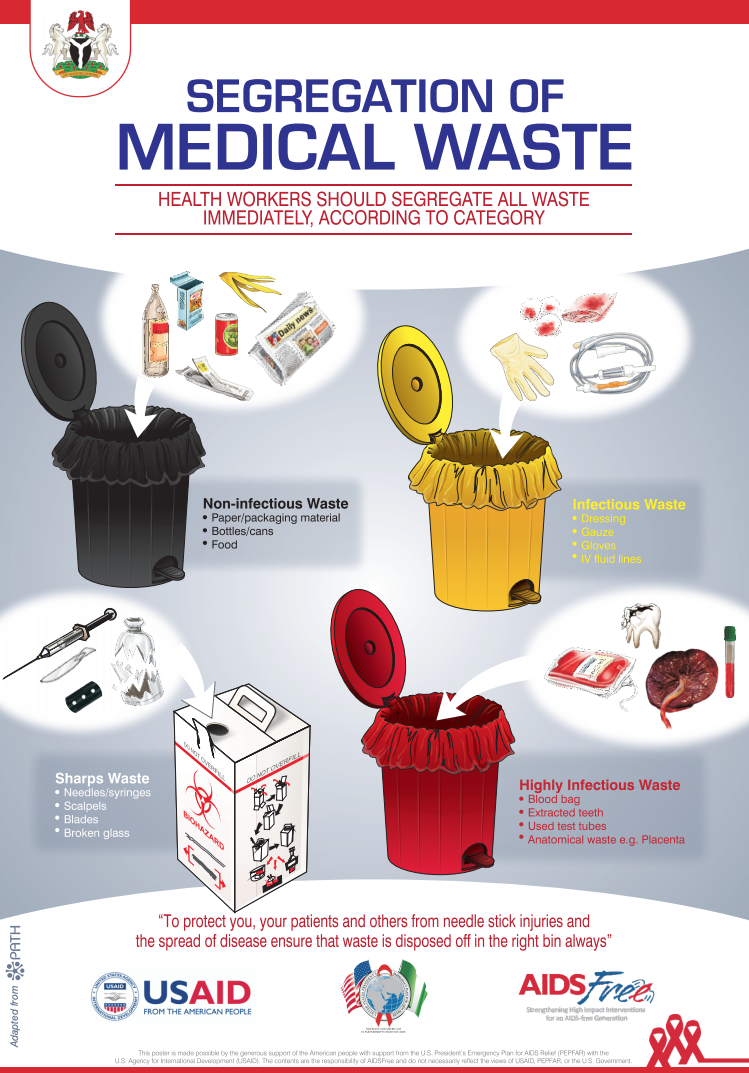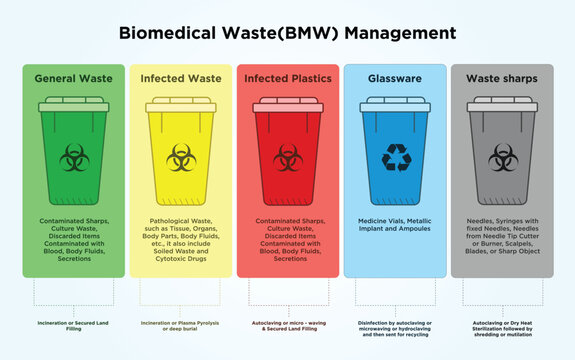Certified and Reliable Medical Waste Removal Service: Partnering for a Cleanser Future
Wiki Article
Conformity and Regulations for Medical Waste Disposal
Conformity and laws for medical waste disposal play a crucial duty in making certain the safety and wellness of both medical care specialists and the basic public. Appropriate monitoring of clinical waste is vital to avoid the spread of infections, protect the atmosphere, and preserve public health. These regulations incorporate various facets, including the classification and segregation of medical waste, proper storage and dealing with procedures, as well as transport and disposal approaches.Importance of Conformity
The importance of conformity with laws for clinical waste disposal can not be overstated. Proper disposal of medical waste is crucial for making certain the safety and security and well-being of healthcare employees, individuals, and the basic public. Medical waste, which consists of items such as used needles, infected gloves, and biomedical waste, can pose significant wellness dangers if not managed and disposed of correctly.Conformity with guidelines makes sure that clinical waste is taken care of in a method that lessens the potential for direct exposure to contagious illness and harmful substances - medical waste removal service. It aids stop the spread of infections, such as HIV, liver disease B and C, and other bloodborne virus. Conformity additionally plays an essential duty in safeguarding the setting by avoiding contamination of water resources, dirt, and air
Failing to adhere to laws can lead to extreme repercussions for healthcare centers, consisting of penalties, legal action, and damages to their track record. Furthermore, non-compliance might endanger the health and wellness of health care employees, clients, and the neighborhood.
Conformity with policies for medical waste disposal calls for adherence to particular guidelines and procedures. These might consist of appropriate segregation, packaging, labeling, and storage space of medical waste. It additionally includes making use of accepted disposal approaches, such as landfilling, incineration, or autoclaving, relying on the type of waste.
Governing Agencies and Bodies
Regulatory companies and bodies play an important function in overseeing conformity with regulations for medical waste disposal. These companies are in charge of establishing guidelines, protocols, and standards to make sure the proper and secure handling of clinical waste. They enforce and monitor compliance to secure public wellness and the environment.Among one of the most famous regulative agencies in the USA is the Epa (EPA) The EPA is accountable for controling the storage space, transportation, treatment, and disposal of medical waste. They develop guidelines for waste generators, transporters, and treatment facilities to comply with, ensuring that all necessary safety measures are taken to stop the spread of illness and contamination.
An additional vital governing body is the Occupational Security and Health Administration (OSHA) OSHA establishes guidelines and criteria to shield employees from job-related threats, including those relevant to medical waste. WasteX Medical Waste Disposal. They provide standards for the safe handling and disposal of medical waste to secure staff members in medical care centers
Along with these government firms, individual states additionally have their very own governing bodies that look after clinical waste disposal. These firms may have their own particular regulations and needs that should be complied with.

Category and Segregation of Medical Waste
To make certain proper administration of clinical waste, it is necessary to classify and segregate it according to developed procedures and standards. medical waste disposal. Classification and partition play an important role in minimizing the risk of infection, shielding the environment, and ensuring the security of healthcare employees and the basic publicClinical waste is classified into different classifications based on its possible hazard degree. These classifications consist of transmittable waste, pathological waste, sharps waste, pharmaceutical waste, chemical waste, and contaminated waste. Each group calls for particular handling, storage, disposal, and transport techniques to minimize the threat of exposure and contamination.
Partition of medical waste includes separating different sorts of waste at the source. This procedure ensures that waste with different danger levels is not combined, reducing the capacity for cross-contamination and making disposal treatments more effective. Appropriate segregation is accomplished via using color-coded tags and containers, which assist health care employees and waste management employees deal with each type and identify of waste properly.
Along with category and segregation, medical care facilities should also stick to neighborhood, state, and government policies pertaining to clinical waste administration. These policies outline specific demands for storage space, transport, therapy, and last disposal of medical waste, making certain conformity and preserving public health and wellness and security.
Proper Storage Space and Managing Procedures
Appropriate storage and handling procedures play an important duty in making certain the risk-free and certified management of clinical waste. Medical waste, which includes things such as utilized syringes, contaminated gloves, and expired medicines, can posture major health and ecological threats if not taken care of correctly. Therefore, it is vital for healthcare facilities and various other generators of clinical waste to apply strict storage and handling procedures.
To start with, clinical waste must be stored in sturdy, leak-proof containers that are especially created for this function. These containers ought to be identified with the global biohazard symbol and words "medical waste" to clearly show the contents. In addition, the containers ought to be maintained firmly near to protect against any kind of possible leak or spillage.
Moreover, it is very important to segregate various sorts of medical waste to avoid cross-contamination. Sharps, such as scalpels and read the article needles, need to be stored in puncture-resistant containers to minimize the threat of injuries - WasteX Medical Waste Disposal. Chemical waste, such as anti-bacterials and solvents, need to be saved independently from other kinds of medical waste to stop harmful direct exposures or chemical responses

Transportation and Disposal Approaches
Healthcare centers should make sure the secure transportation and appropriate disposal of their medical waste to follow laws and safeguard public health. Transportation and disposal techniques play a vital function in preventing the spread of transmittable conditions and reducing the environmental influence of clinical waste.
To deliver medical waste, medical care facilities must use watertight and puncture-resistant containers that are classified with the biohazard symbol. These containers ought to be securely secured to stop any leak during transport. In addition, health care centers need to establish protocols for the transport process, including making use of qualified employees and dedicated vehicles.
Once the medical waste gets to the disposal center, it goes through different techniques of therapy - WasteX Medical Waste Disposal. One typical approach is incineration, which includes shedding the waste at high temperature levels to destroy virus and lower the quantity of waste.
It is crucial for healthcare centers to collaborate with accredited and allowed waste management business to make sure correct transportation and disposal of clinical waste. These companies have the expertise and resources to take care of medical waste securely and in compliance with laws.
Conclusion
To conclude, compliance with policies for clinical waste disposal is of utmost significance to make sure public health and security. Regulatory companies and bodies play an important role in implementing these guidelines. Correct category and partition of medical waste, in addition to complying with suitable storage and dealing with treatments, are necessary to protect against contamination and the spread of illness. Appropriate transport and disposal methods should be carried out to reduce ecological effects. On the whole, adherence to conformity and laws is essential to successfully manage medical waste.Clinical waste, which includes items such as used needles, infected handwear covers, and biomedical waste, can present serious wellness dangers if not taken care of and disposed of properly.
These categories include transmittable waste, pathological waste, sharps waste, pharmaceutical waste, chemical waste, and radioactive waste.Partition of medical waste entails separating different types of waste at the source. Correct segregation is accomplished via the use of color-coded tags and containers, which help medical care employees and waste management workers recognize and manage each type of waste properly.
Chemical waste, such as disinfectants and solvents, should be kept independently from various other kinds of clinical waste to stop harmful direct exposures or chemical reactions.
Report this wiki page